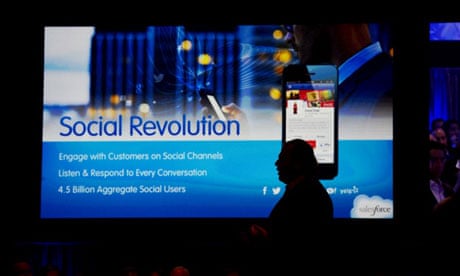Social media is a marketing revolution, enabling new ways to engage with customers and potential customers, and empowering customers to interact with vendors and influence brand sentiment in new ways.
The possibilities feel quite overwhelming for brands trying to work out where to start with a social media strategy, says John Willshire of marketing and product innovation studio Smithery. "If traditional advertising is akin to electromagnetism, then social media is more like gravity. It's easy to wield electromagnetism, be very exact and make it do what you want for a set period of time. But gravity – social media – is a weak force that affects everything, and you'll have no idea how things are going to go. The only strategy is to design landscapes and build contraptions to keep things roughly in the right place."
Cadbury is one brand that has certainly found a sweet spot among the noise and distraction of social media. A network of campaigns and a "social first" strategy have combined brand building with entertaining editorial and no small amount of market research; the confectioner famously re-introduced Wispas in response to public demand on Facebook and MySpace back in 2007.
Since then, Cadbury's strategy has become increasingly sophisticated. Its biggest brands have dedicated Facebook pages offering competitions, quizzes and the chance to be a "Joyville taster" for new products. Aiming to increase engagement amongst Facebook users, Cadbury uses events to get fans involved – a live-streamed attempt to build a giant "like" hand out of Dairy Milk bars added 40,000 new fans and engaged 350,000 users across the site.
The numbers are similarly impressive across Twitter, where Cadbury's main account has 145,000 followers, and paid-for promoted tweets for the new Wispa Gold increased mentions by 1,800%. And on Google Plus, Cadbury has been one of few brands to embrace the site early on, reaching 500,000 users during one live Hangout on Air. "What's different is that it's eye-to-eye, face-to-face contact," says Jerry Daykin, Cadbury community manager. "We can't directly connect with every person who buys our chocolate, but we can connect with some of them. Then more people see the Hangout On Air, and feel they're part of the experience. It's a new frontier."
Sam Michel, founder of the digital networking service Chinwag and Social Media Week, says this was a canny move by Cadbury. "No-one else was on Google Plus then, so Google promoted it a lot and it got great visibility. There's definitely an early-mover advantage to being on lesser-known networks. But it's also about finding the right networks for your business, and just trying things, searching for some kind of rhythm, until you find what works for you. Have a play – you just have to get on there and have a go."
Michel also noted a word of caution that some kind of framework for staff that covers legal areas such as libel, is essential, though much of this is common sense. Michel has noticed that larger companies often appoint an external agency to kick off their social media campaigns, but often end up moving that activity in-house so they can take ownership of it.
There are swathes of tools available now to monitor the diverse noise of social media, from simple, free, web-based tools for Twitter monitoring, to multi-level, enterprise tools like Salesforce Marketing Cloud, which combines data analytics with engagement and monitoring tools and a content management hub.
Smithery's Willshire says the major challenge for marketers is to be able to use data intelligently, but as just one half of the picture. Traditional marketing was too reliant on too little data, like a quarterly report, but social media marketing is drowning in the stuff. "Data can only be subjective, reinforcing the argument that you want to make, and if you're only watching the data you will be missing creative opportunities that aren't being measured."
It's important to find the right people to speak for your brand, and as individuals not as one uniform. Define a series of objectives and brand principles, as well as those legal considerations, and use these as guidelines to inform the tools that you choose and activity your brand generates.
It's better to have a plan to deviate from than no plan at all, says Willshire. Above all, embrace the noise. "There's a switch in comprehension now about exactly what a brand is, but it is no longer the three words you choose for your tagline. People have always talked about your brand but you couldn't hear them. Now you have to listen, and your brand is what you hear."


